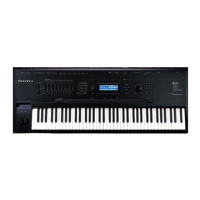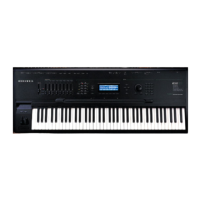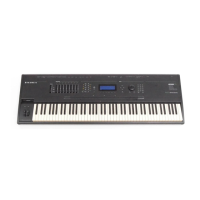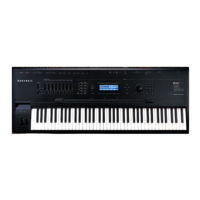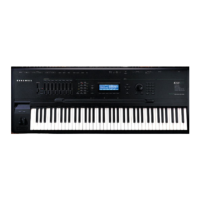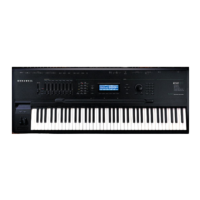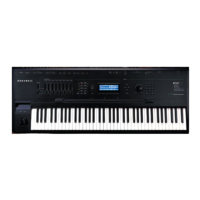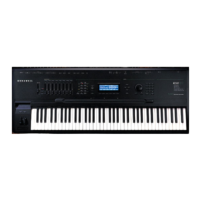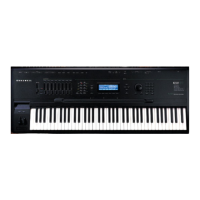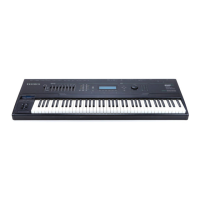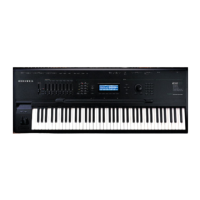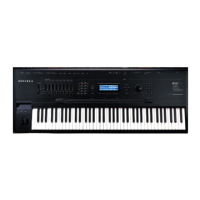DSP Functions
Filters
14-18
The two-pole notch filter has two control input pages, one for center frequency, one for width.
Partials with frequencies above or below the notch will be unaffected. Within the notch, partials
will be attenuated according to the width of the notch. The width is defined in terms of the
number of octaves between the points on the signal’s attenuation curve where the attenuation
is 3 dB (see the explanation of F2 WID for the PARAMETRIC EQ function). For example, if the
width is set at four octaves, then the attenuation will be 3 dB at two octaves in either direction
from the center frequency. There’s no attenuation of partials at more than two octaves in either
direction from the center frequency.
Two-pole Notch Filter, Fixed Width (NOTCH2)
The only functional difference between NOTCH2 and NOTCH FILTER is that the width of
NOTCH2 is fixed at 2.2 octaves. This gives you a one-stage notch filter function.
Two-pole Bandpass Filter (BANDPASS FILTER)
This is essentially the opposite of a notch filter; it passes all partials at the center frequency, and
cut the levels of partials above or below the center frequency. The width is defined the same as
for the double notch filter.
-80
-70
-60
-50
-40
-30
-20
-10
0
10 100 1000 10000 100000
Frequency in Hertz
Amplitude in dB
Center frequency
width from .1 to 4 octaves
= C 6;
4
.1
2-Pole Notch Filter:
Width in octaves
-70
-60
-50
-40
-30
-20
-10
0
10 100 1000 10000 100000
Frequency in Hertz
Amplitude in dB
Center frequency
at C 4, C 7, C 10
C 4
C 10
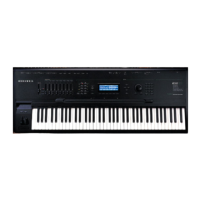
